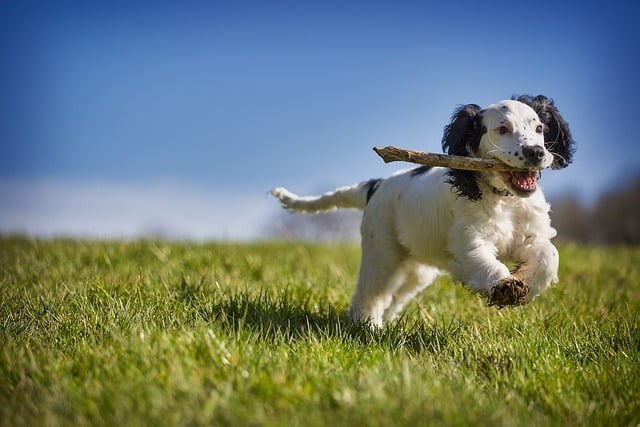Canine Behavior Solutions | 5 Key Strategies for Positive Dog Training and Bonding
Understanding canine behavior is essential for creating a harmonious relationship with your dog. This comprehensive guide aims to deepen your understanding of dog psychology, behavior patterns, and offers practical solutions to common issues. It’s an insightful journey into the world of our canine companions.
Understanding Canine Behavior
The Importance of Knowing Your Dog
Recognizing your dog’s unique way of expressing emotions and needs is crucial. It’s not just about obedience, but understanding the root causes of their actions and responding appropriately.
The Role of Breed in Behavior
Different breeds have inherent traits influencing their behavior. For instance, a Border Collie might have a stronger herding instinct than a Bulldog. Understanding these breed-specific tendencies is essential for appropriate training and care.
Decoding Dog Body Language
Interpreting body language is key to understanding your dog. Tail wagging, ear positioning, and eye contact convey various emotions and intentions. Mastering this language improves communication and strengthens your bond.
Common Canine Behavioral Issues and Solutions
Separation Anxiety
A prevalent issue where dogs exhibit anxiety when left alone. Solutions include gradual desensitization, engaging toys, and considering a pet sitter or doggy daycare.
Aggression
Aggression can stem from fear, territorial behavior, or past trauma. Managing this requires professional training, a safe environment, and avoiding trigger situations.
Excessive Barking
Barking may signal alerting, boredom, or attention-seeking. Solutions involve exercise, mental stimulation, and training commands like “quiet.”
Chewing and Destructive Behavior
Natural for dogs, this behavior can become problematic. Solutions include providing appropriate chew toys, regular exercise, and training.
In-Depth Exploration of Specific Behaviors
The Mystery of Digging
Digging is a natural instinct for many dogs, often linked to their hunting or denning instincts. To manage this, provide a designated digging area or engage your dog in more physical activities to redirect this energy.
Overcoming Obsessive-Compulsive Behaviors
Some dogs develop repetitive behaviors like excessive licking or tail chasing. These may stem from anxiety or boredom. Enrichment activities, mental stimulation, and in some cases, veterinary intervention, can be effective.
Understanding Prey Drive
Prey drive is common, especially in hunting breeds. This instinctual behavior can manifest as chasing moving objects or animals. Training for impulse control and providing structured play can help manage this drive.
Addressing Jumping Up
Dogs often jump up to greet or seek attention. Training alternative behaviors like sitting to greet and reinforcing calm interactions can curb this habit.
Training and Behavior Modification Techniques
Positive Reinforcement
Positive reinforcement is about rewarding desired behaviors, encouraging repetition. Treats, praise, or play can be effective rewards.
Consistency in Training
Maintaining consistency in commands and rules is crucial for effective training. Mixed signals can lead to confusion and hinder progress.
Professional Help
Seeking a professional dog trainer or behaviorist can be beneficial for severe issues or specialized training needs.
Preventative Measures for Behavioral Issues
The Power of Early Socialization
Socializing your dog from a young age is critical in preventing behavioral issues. It helps them become well-adjusted to various environments and situations.
Regular Exercise and Mental Stimulation
A well-exercised and mentally stimulated dog is typically well-behaved. This includes both physical activities and cognitive challenges.
Structured Environment
Dogs thrive in a structured environment. Regular routines for feeding, walking, and playtime create a sense of security and predictability.
Advanced Behavioral Insights and Solutions
Tailoring Training to Individual Dogs
Understanding that each dog has unique needs and learning styles is key. Tailoring training approaches to suit these individual differences can yield better results.
The Role of Nutrition in Behavior
Nutrition plays a significant role in behavior. A balanced diet can impact energy levels and overall temperament. Consulting a veterinarian for dietary advice is recommended.
The Importance of Veterinary Check-Ups
Regular veterinary check-ups can help identify and address any underlying health issues that may influence behavior. This is a critical aspect of preventive care.
Technology in Training
Advancements in technology, like interactive toys and training apps, offer new ways to engage and train dogs. These tools can supplement traditional training methods.
Conclusion
Understanding and effectively addressing canine behavior is a journey that requires patience, knowledge, and empathy. Each dog is unique, and solutions vary based on individual needs and circumstances. Applying these insights and maintaining a bond of trust and love ensures a happy, healthy relationship with your canine companion.
Subscribe to our weekly newsletter below and never miss the latest article.









